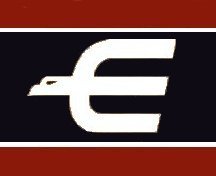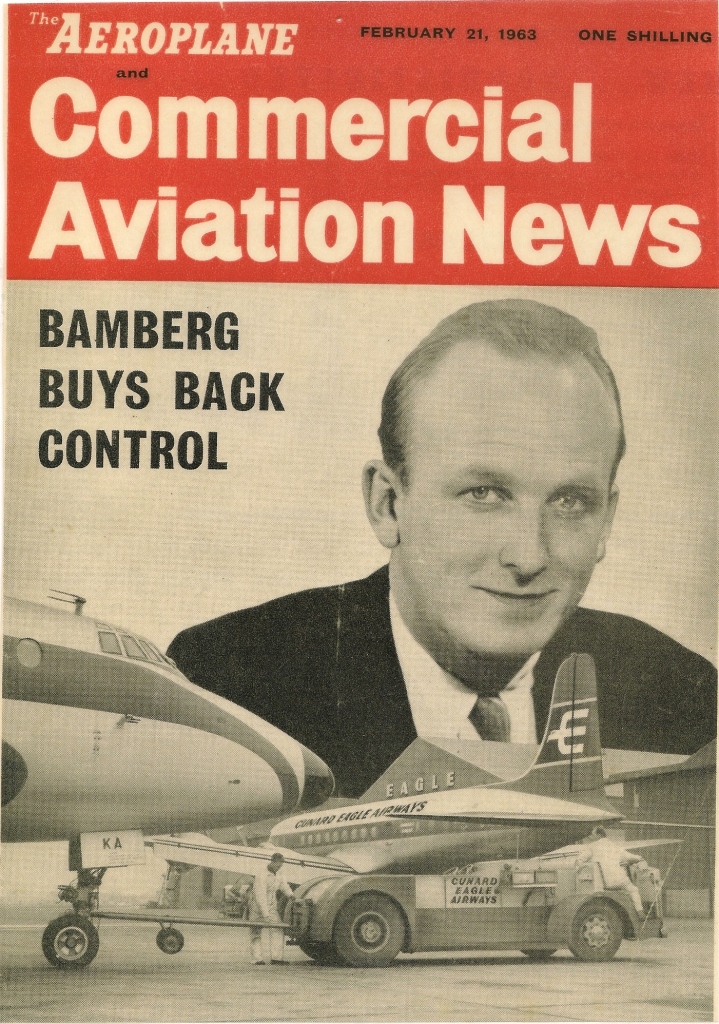|
The History of....
|
British Eagle International
Airlines
With the conclusion of the Cunard episode and the plumb routes being taken by Cunard in their merge with B.O.A.C it was not surprising that the morale at Eagle was at an all time low. However, the spirit of Eagle was to prove stronger in its resolve to get back into the business of operating an airline. Harold Bamberg was once again at the helm having regained full control of what was left. With determination to see it succeed he with others began to rebuild the operation. The airline dropped the name Cunard Eagle and replaced it with British Eagle International Airways. It retained its famous Eagle symbol, which was known all over the world. British Eagle was awarded a number of domestic routes in direct competition with BEA. The restrictions of the licences made it difficult to be over successful, but Eagle services were first class and appreciated by the passengers. With an expanding
network more aircraft were needed. The arrival of a Britannia 312 G-AOVT marked the start of a large number
of Britannias that were to serve Eagle. In 1964 Eagle took over Starways of Liverpool and continued to operate their routes. Maintenance of the Eagle Viscount fleet was transferred to Liverpool. Extra Viscounts were leased from Channel Airways. Interestingly, one of the leased aircraft was G-ALWF the oldest Viscount flying. Two Britannias were purchased from the defunct Argentine airline Transcontinental and converted into freighters. Eagle engineers with help from Bristol of Filton fitted freight doors to both aircraft. A contract with the airline Qantas meant that many of the Britannias were found operating the emigrant flights to Australia on a £10 assisted passenger scheme. The year had started with the sad loss of G-AOVO crashing on the Glungzer Mountain whilst attempting to land at Innsbruck. The Austrians have placed a permanent memorial to the victims. In 1966 Captain J. Gerrish was the commander of the Britannia, which made history between January 14th and 29th by making the first direct commercial flight from South Africa to South America, and also making the first in the reverse direction. The westbound crossing between Luanda and Recife was made between 18,000 and 24,000 feet in nine and three quarter hours and the return between Rio and Windhoek (3995 statute miles) at between 19,000 and 29,000 in twelve hours. Average speed both ways was 350 m.p.h. Info about trip In 1966 Eagle returned to jet operation with the arrival of BAC 1-11 aircraft. During this year the airline carried 1,010,00 passengers of whom 304,00 were on scheduled international and domestic routes. The Britannia fleet
amassed 52,308 flying hours covering in excess of 17,000,000 miles. 1967 began with the application for a licence to operate across the pond to New York, the Caribbean and Hong Kong. Two new Boeing 707 aircraft had been ordered for the operation. Yet again the restrictive practices of the government and the opposition of B.O.A.C towards independent airlines killed these plans. With government policy and the continuous objection by the state carriers, independent airlines had much against them. The company had not had a good year but despite all the difficulties, they had achieved increases in punctuality on both domestic and international services. In 1968 Harold Bamberg was awarded the CBE in the New Years honours list for his services to aviation. Two ex Qantas Boeing 707s were purchased with a view to an application to enter the New York route, yet again killed of by B.O.A.C objections. Licences were granted to operate inclusive tour services to Bermuda and Nassau as well as Nairobi and Mombassa. Sadly this was not the saviour of the airline and on Wednesday 6th November 1968 the airline ceased to fly. At the close the
airline had thirteen Britannias, seven BAC 1-11s, three Viscounts, British Eagle International
Airways is remembered in a number of ways; there are the personal
memories of the ex-staff, the yearly reunions, the taxiway that
is referred to as Eagle Taxiway at Heathrow. Even folk who were
not even born then show a great interest in the airline, monitor
ebay to see the rush to buy anything to do with Eagle. |


